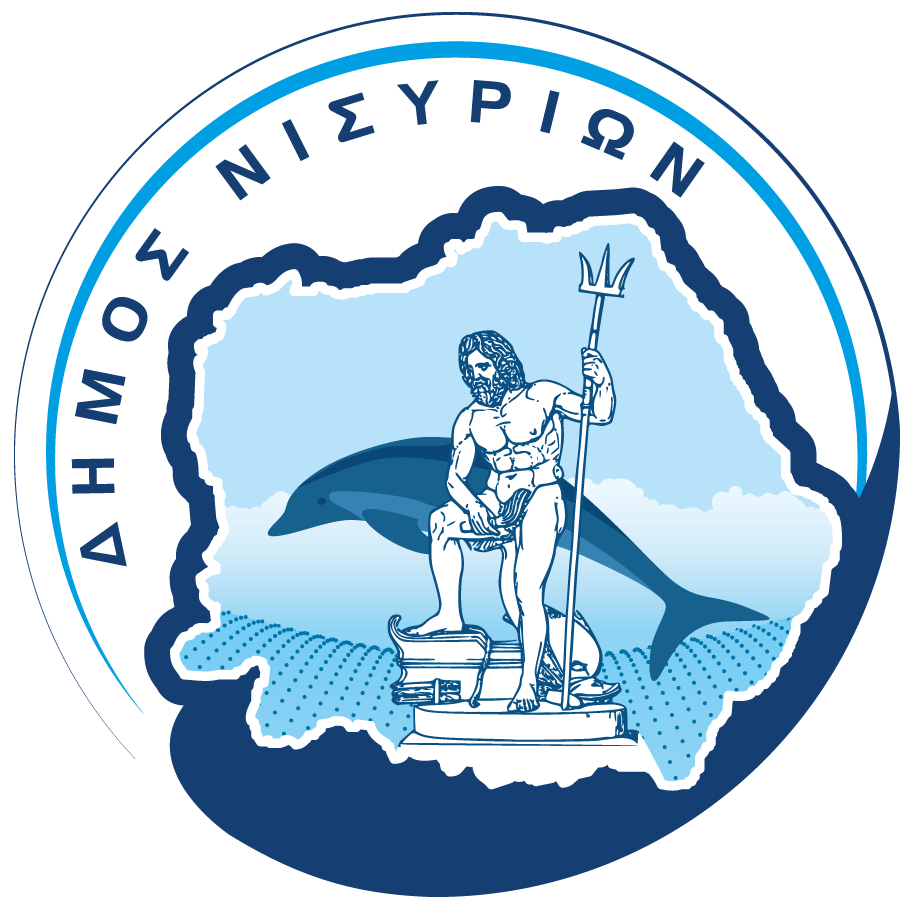Καθώς το πλοίο προσεγγίζει το Μανδράκι, περνά δίπλα σχεδόν από το Γυαλί, ένα από τα νησιά της συστάδας της Νισύρου. Η όψη του στην αρχή ξενίζει με τους λευκούς λόφους ελαφρόπετρας από τη μια και το πυκνό δάσος πεύκων από την άλλη. Σίγουρα παράξενος τόπος, ο οποίος όμως κρύβει μια αξιοθαύμαστη ιστορία και εκπληκτικής ομορφιάς επισκέψιμους κολπίσκους με γαλαζοπράσινα νερά.
Η πρόσβαση είναι εύκολη από το Μανδράκι με την καθημερινή πρωινή μετακίνηση των εργαζομένων στη ΛΑΒΑ Μεταλλευτική και Λατομική Α.Ε., την εταιρεία που εξορύσσει και επεξεργάζεται από τη δεκαετία του 1950 τα κοιτάσματα ελαφρόπετρας – περλίτη. Πρόκειται για τη μεγαλύτερη εξαγωγική εταιρεία ελαφρόπετρας (κίσσηρης) στον κόσμο με παραγωγή που ανέρχεται σε ένα εκατομμύριο τόνους ετησίως καλύπτοντας το σύνολο της ελληνικής αγοράς, πραγματοποιώντας ταυτόχρονα μεγάλες εξαγωγές στην Ευρώπη τη Μέση Ανατολή, την Αμερική κ.ά. Μια από τις λίγες περιπτώσεις εκμετάλλευσης προϊόντος που αφήνει ένα σεβαστό ποσό κάθε χρόνο στον Δήμο Νισύρου, απασχολώντας ταυτόχρονα αρκετούς εργαζόμενους. Ιδιαίτερη μνεία πρέπει να γίνει στην αποκατάσταση του τοπίου με συνεχείς δενδροφυτεύσεις. Αυτό αποτελεί πάγια προτεραιότητα για την ΛΑΒΑ Α.Ε. μια από τις λίγες εταιρείες με λατομική δραστηριότητα στην Ελλάδα η οποία σέβεται το περιβάλλον που δραστηριοποιείται.
Η διαδρομή μέχρι το λιμανάκι ή τον γειτονικό Άγιο Αντώνιο είναι περίπου 15-20 λεπτά (2 ν.μ.), ενώ την καλοκαιρινή περίοδο υπάρχει πλοιάριο που κάνει τη διαδρομή ή τον γύρο του νησιού από τους Πάλους. Καθώς πλησιάζετε, το «παράξενο» σχήμα με τους δύο σχεδόν ισοϋψείς λόφους (190 και 174μ. αντίστοιχα), που ενώνονται με έναν στενό ισθμό μήκους 900μ. και πλάτους 300μ. γίνεται πιο οικείο. Μια τεράστια λευκή αγκαλιά σάς υποδέχεται, μια ωραία παραλία από ελαφρόπετρα σε ένα περιβάλλον που θυμίζει εξωπραγματικό γιγάντιο γλυπτό. Μην περιμένετε να δείτε οποιαδήποτε τουριστική εγκατάσταση ή κάτι άλλο, πρόκειται για μοναδική περίπτωση αρχαιολογικού και εργασιακού χώρου με πάρα πολύ όμορφα τοπία, μια ξεχωριστή εμπειρία.
Το εντυπωσιακό ηφαιστειακό οικοδόμημα των νησιών της συστάδας, όπως άλλωστε και η ίδια η Νίσυρος ανήκει στο ηφαιστειακό τόξο του νοτίου Αιγαίου. Από το ωκεανογραφικό σκάφος Αιγαίο του Εθνικού Κέντρου Θαλασσίων Ερευνών (Ε.Κ.Ο.Ε.) εντοπίστηκαν στην περιοχή μεταξύ Κω – Νισύρου ιδιαίτερα γύρω από τη νησίδα Γυαλί, αρκετά υποθαλάσσια ηφαίστεια, παρόμοια με αυτό που εντοπίστηκε στο βυθό της λεκάνης της Επιδαύρου. Τα πρώτα ηφαιστειακά επεισόδια στην περιοχή ξεκίνησαν πριν από 2,5 εκατομμύρια χρόνια. Από τότε, με μικρές ή μεγαλύτερες διακοπές, το λειωμένο ηφαιστειακό υλικό αναβλύζει ή εκτινάσσεται από το εσωτερικό της γης, οικοδομώντας διάφορα μικρά η μεγάλα ηφαιστειακά κέντρα. Το μεγαλύτερο μέρος της δυτικής Κω, η Νίσυρος, αλλά και τα μικρότερα νησιά που τις περιτριγυρίζουν, Περγούσα, Παχειά, Γυαλί, Στρογγυλή, είναι δημιουργήματα της ηφαιστειακής δράσης, για την ακρίβεια ό,τι χερσεύει από τα ηφαιστειακά κέντρα που οικοδομήθηκαν. Το εύκολα επισκέψιμο Γυαλί είναι ίσως το πιο ενδιαφέρον από αυτά.


























